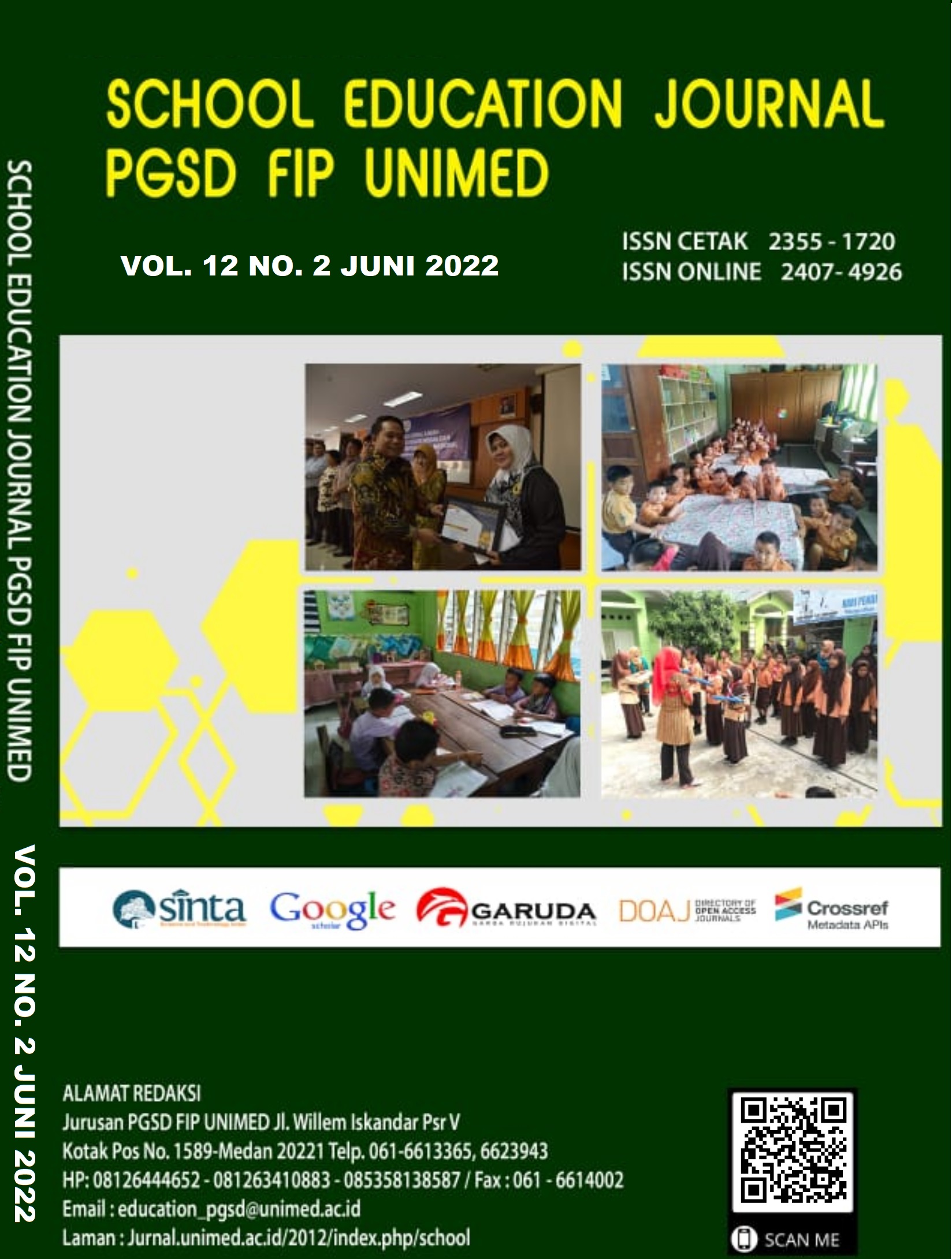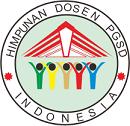USING VIRTUAL LEARNING ENVIRONMENT ON REALISTIC MATHEMATICS EDUCATION TO ENHANCE SEVENTH GRADERS™ MATHEMATICAL MODELING ABILITY
DOI:
https://doi.org/10.24114/sejpgsd.v12i2.35387Keywords:
Realistic Mathematics Education, Virtual Learning Environment, Modeling Ability.Abstract
Many research studied that realistic mathematics education (RME) can be an alternative solution to students™ difficulties in learning mathematics. Various forms of technology additionally are further employed to support students' mathematical achievements. However, research on the implementation of virtual learning environments (VLE) with the RME approach is still lacking. The main goals of this research were to create an instructional process of virtual learning environments on realistic mathematics education to improve seventh graders' mathematical modeling abilities and to examine the effect of designs on mathematical modeling ability. Theory of realistic mathematics education and virtual learning environment literature were integrated. The design model developed was verified by experts to be tested. The pre-test / post-test test method was carried out to see the effectiveness of the design. The sixty-seventh graders from a secondary school in North Sumatera were selected as samples. The instructional process developed consists of four stages, namely (1) purposing contextual problems, (2) defining situations from contextual problems, (3) solving problems individually or in groups, and (4) reviewing and comparing solutions. The developed virtual learning environment consists of 5 components, namely (1) users management, (2) content and activities management, (3) resources management, (4) visualization and communication management, and (5) evaluation and assessment management. The mathematical modeling ability concerning experimental group students is significantly higher after being taught through a realistic mathematics education instructional process via a virtual learning environment. Comparison of the experimental group with the control group also showed the same results.References
Armanto, D. 2002. Teaching multiplication and division realistically in Indonesian primary schools: A prototype of local instructional theory. University of Twente [Host].
Bakker, A., Doorman, M., & Drijvers, P. 2003. Design research on how IT may support the development of symbols and meaning in mathematics education. Congress on Education (ORD).
Blum, W., & Ferri, R. B. 2009. Mathematical modelling: Can it be taught and learnt?. Journal of Mathematical Modelling and Application, 1(1), 45“58.
ErbaÅŸ, A. K., Alacaci, C., & BaÅŸ, S. 2014. Mathematical Modeling in Mathematics Education : Basic Concepts and Approaches *. 14(4), 1621“1627. https://doi.org/10.12738/estp.2014.4.2039
Gravemeijer, K., & van Eerde, D. 2009. Design research as a means for building a knowledge base for teachers and teaching in mathematics education. The Elementary School Journal, 109 (5), 510“524.
Hayati, S., & Ulya, L. 2021. Analisis Kemampuan Kognitif Matematika Materi Operasi Hitung Pecahan Menggunakan Video Pembelajaran Matematika Sistem Daring Di Kelas V Sekolah Dasar. In SEJ (School Education Journal (Vol. 11, Issue 1).
Information Resources Management Association, U. S. A. 2012. Virtual Learning Environments: Concepts, Methodologies, Tools and Applications. II.
Kemendikbud. 2016. Peraturan Menteri Pendidikan dan Kebudayaan Nomor 22 Tahun 2016 tentang Standar Proses Pendidikan Dasar dan Menengah. Menteri Pendidikan Dan Kebudayaan, 1“30. https://doi.org/10.1017/CBO9781107415324.004
Mailani, E. 2014. Upaya Meningkatkan Kompetensi Paedagogik Guru Dalam Menyusun Rencana Pelaksanaan Pembelajaran Melalui Kegiatan Pendampingan (Mentoring). jurnal.unimed.ac.id.
Okita, S. Y. 2014. The relative merits of transparency: Investigating situations that support the use of robotics in developing student learning adaptability across virtual and physical computing platforms. British Journal of Educational Technology, 45(5), 844“862.
Phungsuk, R., Viriyavejakul, C., & Ratanaolarn, T. 2017. Kasetsart Journal of Social Sciences Development of a problem-based learning model via a virtual learning environment. Kasetsart Journal of Social Sciences. https://doi.org/10.1016/j.kjss.2017.01.001
Salim, S., & Maryanti, E. 2017. Pengembangan perangkat pembelajaran matematika melalui teori pembelajaran sibernetik berbantuan software derive. Jurnal Riset Pendidikan Matematika, 4(2), 229“238.
Sumirattana, S., Makanong, A., & Thipkong, S. 2017. Using realistic mathematics education and the DAPIC problem-solving process to enhance secondary school students™ mathematical literacy. Kasetsart Journal of Social Sciences, 38(3), 307“315. https://doi.org/10.1016/j.kjss.2016.06.001.
Published
Issue
Section
License
Authors whose manuscripts are approved are approved as follows:
- The publication rights for all journal manuscript materials published/published on the SEJ (School Education Journal) E-Journal site are held by the editorial board with the author's knowledge (moral rights remain with the manuscript authors).
- The formal legal requirements for accessing this electronic digital journal article are subject to the terms of the Creative Commons Attribution-ShareAlike (CC BY-SA 4.0) license, which means that E-Journal SEJ (School Education Journal) has the right to store, transfer media/format, manage in the form of a database, maintain, and publish articles without asking permission from the author as long as the author's name remains as the copyright owner.
- Manuscripts published/published electronically are open access for educational, research, and library purposes.













